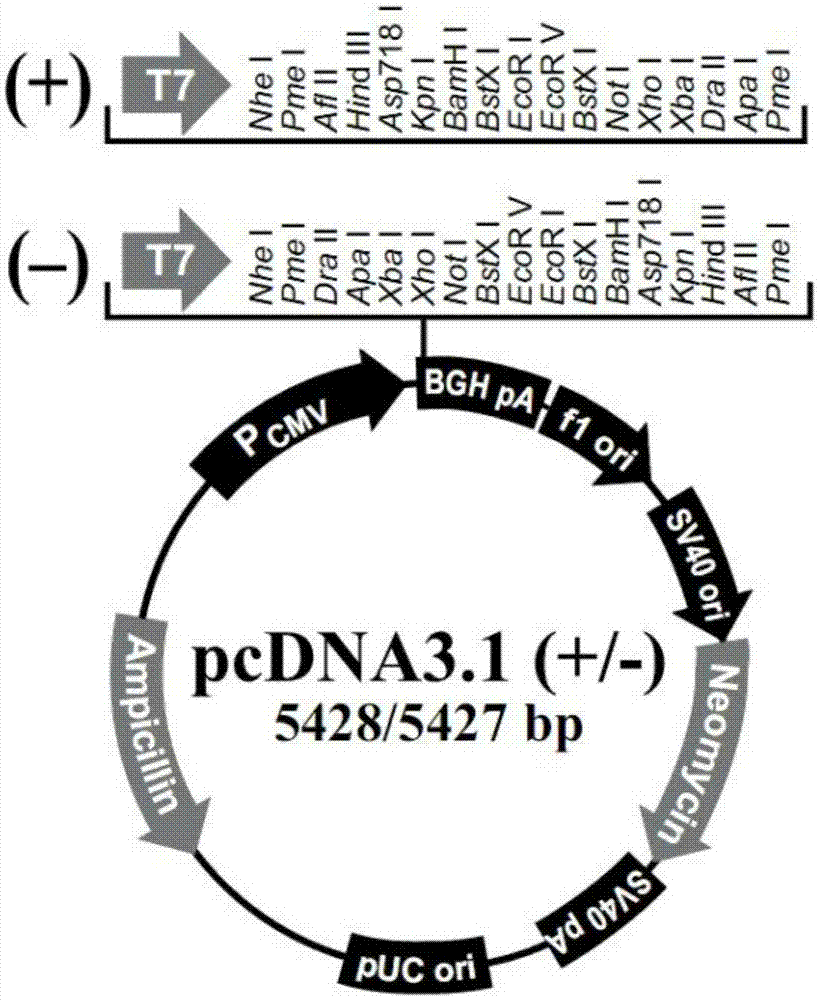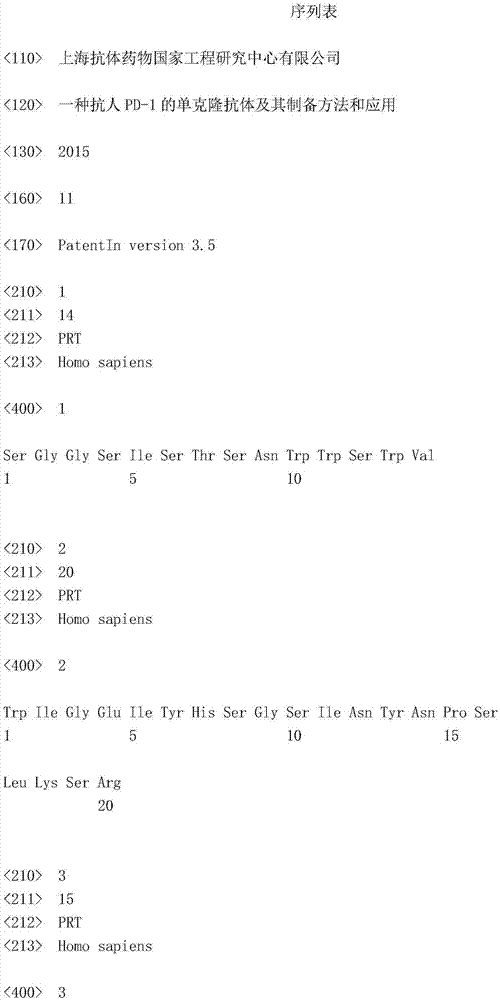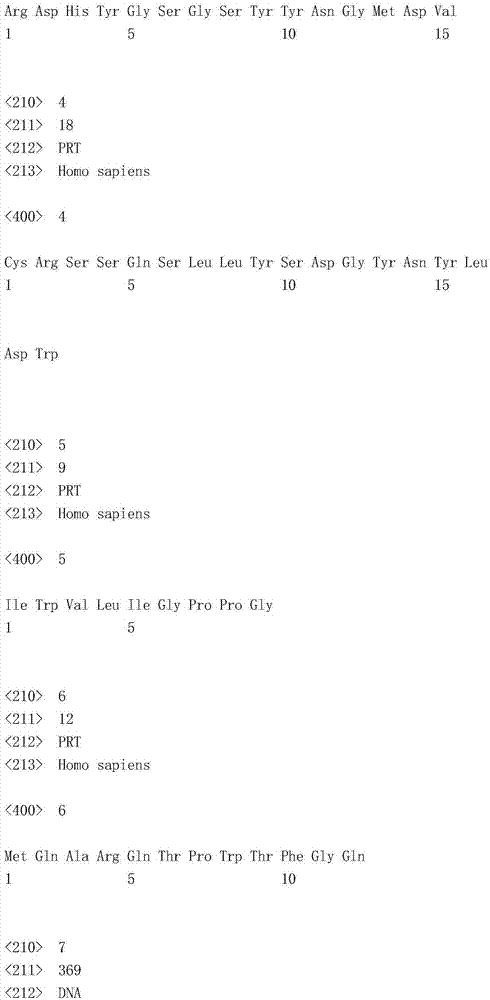Anti-human PD-1 monoclonal antibody and preparation method and application thereof
A monoclonal antibody, PD-1 technology, applied in the field of biomedicine, can solve the problems of low affinity and weak selectivity, and achieve good biological activity
- Summary
- Abstract
- Description
- Claims
- Application Information
AI Technical Summary
Problems solved by technology
Method used
Image
Examples
preparation example Construction
[0046] The preparation method of the anti-human PD-1 monoclonal antibody disclosed in the present invention comprises: cultivating the above-mentioned host cells under expression conditions, thereby expressing the anti-human PD-1 monoclonal antibody; isolating and purifying the anti-human PD-1 1 monoclonal antibody. Using the above method, the recombinant protein can be purified into a substantially uniform substance, such as a single band on SDS-PAGE electrophoresis.
[0047] The anti-human PD-1 monoclonal antibody disclosed in the present invention can be separated and purified by affinity chromatography. According to the characteristics of the affinity column used, conventional methods such as high-salt buffer and pH change can be used to wash the antibody. Monoclonal antibody bound to an affinity column. The inventors of the present invention conducted a detection experiment on the obtained anti-human PD-1 monoclonal antibody, and the experimental results showed that the ...
Embodiment 1
[0048] Example 1 Preparation of PD-1 antigen
[0049] In order to produce anti-human PD-1 (hPD-1) antibodies, the cDNA encoding the open reading frame of the full-length amino acid sequence of human PD-1 was obtained by PCR method, and the obtained cDNA was subcloned into the vector pcDNA3.1 (Invitrogen, Carlsbad, CA) to obtain hPD-1 vector. Wherein the structure of the vector pcDNA3.1 is as follows figure 1 As shown, the cDNA sequence is shown in SEQ ID NO: 11, and the GenBank number of the sequence is: BC074740.2.
[0050] The resulting hPD-1 vector was stably transfected into CHO-K1 cells (purchased from Life technologies), and the expression of PD-1 was monitored by flow cytometry (FACS), and the CHO-K1 expressing human PD-1 on its membrane was isolated cloned and named it CHO-hPD1, please refer to the relevant cell technology manual for the specific operation method.
[0051] Mice were immunized by gene gun with Helios gene gun (BioRad) and DNA-coated gold bullets (Bio...
Embodiment 2
[0054] Preparation, screening and library building of embodiment 2 hybridomas
[0055] Four days after the last immunization, the mice were sacrificed according to the literature (Steenbakkers et al., 1992, J.Immunol.Meth.152:69-77; Steenbakkers et al., 1994, Mol.Biol.Rep.19:125-134 ), preparing a population of splenocytes depleted of red blood cells, and fusing the resulting splenocytes. Hybridoma sp2 / 0 cells in good growth state (from the Cell Bank of the Type Culture Collection Committee of the Chinese Academy of Sciences) were taken at 37°C and 5% CO 2 Cultured in an incubator, the medium was changed the day before fusion. The fusion and screening process is as follows: the mouse spleen is taken, ground and washed, and then counted. According to splenocytes:sp2 / 0 cells=10:1, the two kinds of cells were mixed and centrifuged at 1500rpm for 7 minutes. Wash away the supernatant. Add 1ml of PEG (1450) within 1 minute, shake gently for 90 seconds, add 5ml of serum-free DMEM...
PUM
 Login to View More
Login to View More Abstract
Description
Claims
Application Information
 Login to View More
Login to View More - R&D
- Intellectual Property
- Life Sciences
- Materials
- Tech Scout
- Unparalleled Data Quality
- Higher Quality Content
- 60% Fewer Hallucinations
Browse by: Latest US Patents, China's latest patents, Technical Efficacy Thesaurus, Application Domain, Technology Topic, Popular Technical Reports.
© 2025 PatSnap. All rights reserved.Legal|Privacy policy|Modern Slavery Act Transparency Statement|Sitemap|About US| Contact US: help@patsnap.com



